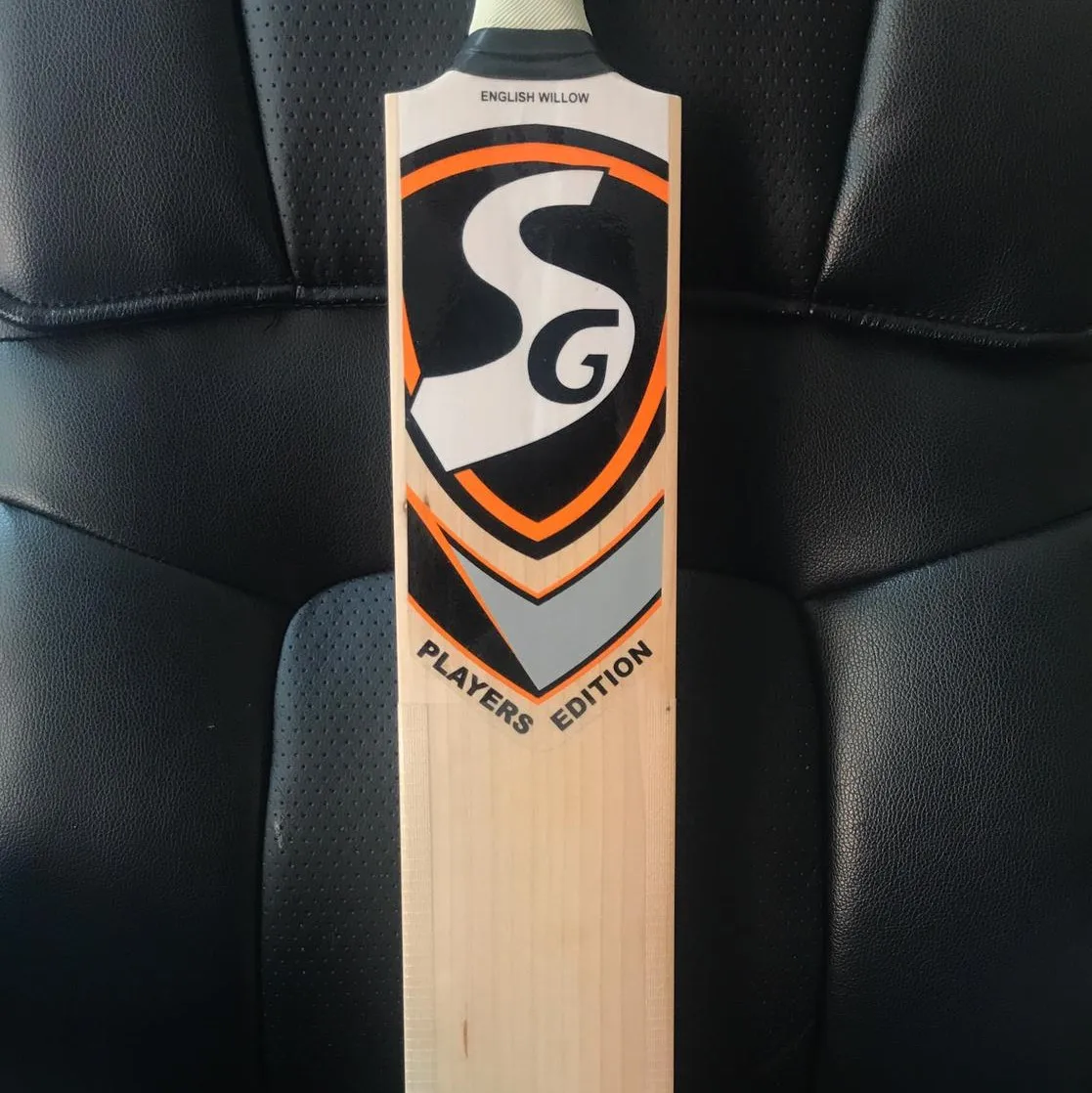Описание и отзывы
Трекер стоимости
| Месяц | Минимальная цена | Макс. стоимость |
|---|---|---|
| Sep-19-2025 | 119.60 $* | 125.16 $* |
| Aug-19-2025 | 118.62 $* | 124.42 $* |
| Jul-19-2025 | 99.44 $* | 104.72 $* |
| Jun-19-2025 | 116.92 $* | 122.36 $* |
| May-19-2025 | 101.33 $* | 106.10 $* |
| Apr-19-2025 | 114.40 $* | 120.14 $* |
| Mar-19-2025 | 113.84 $* | 119.68 $* |
| Feb-19-2025 | 112.36 $* | 118.57 $* |
| Jan-19-2025 | 111.25 $* | 117.14 $* |
Характеристики
Techniques
Cricket bat making includes the following steps: grading, selecting and seasoning the timber, machining the clefts into, pressing the bats to compress the fibres (pressing happens at several stages) fitting the handle into the blade, shaping the blade with a drawknife, shaping the shoulders and handle with a drawknife and rounded spoke shave, sanding the shaped bat, rasping the handle, binding the handle with linen thread, and polishing the completed bat.
Issues affecting the viability of the craft
- Brand versus manufacturer: While there are nearly fifty bat ‘brands’ claiming that their bats are made in the UK, there are only 12-13 genuine UK made brands. Many brands sell bats that have been made in India or Pakistan and only finished in the UK. Other people might buy-in parts and only finish the bats themselves. It is very difficult for the consumer to know which is which.
- Market issues: There are a lot of small bat makers around the country, making 1,000-2,000 bats a year, but the bigger brands have been forced to outsource.
- Market issues: There are not as many bat makers as there once were as most bats are now made in India and Pakistan due to the cheapness of labour abroad. While this is starting to level out, the disappearance of the skills in the UK means that the craft is unlikely to return to the UK.
- Market issues: There isn’t the demand for bats that there once was, as the market is covered by imported bats and it is difficult for small makers in the UK to compete with that end of the market.
- Market issues: It is very hard to make a living from bat making – to be a genuine bat maker you need to work full time and in some cases seven days a week during busy periods
- Marketing issues: Salespeople push bats from India. The players are also paid by the big companies and so smaller companies cannot afford the sponsorship for players to use their bats
- Supply of raw materials: Cricket bats can only be made from English cricket bat willow. There are only a few timber merchants dealing in willow and while there is enough, there isn’t an abundance as much of the willow is sent to India/Pakistan for bats to be made there.
- Supply of raw materials: English cricket bat willow suffered from watermark disease in the 1990s. This was eradicated, but today there is a lot of storm damage to the willow. High winds cause the fibres to fracture, which causes the bats to snap – although this can usually be spotted in the making.
- Cost of raw materials: The price of English willow is increasing every year.
- Supply of equipment: Cost of machinery and the infrastructure needed to store it. Some manufacturers do the pressing for smaller makers as they require specialist machinery.
- Ageing workforce: Many of the existing makers are getting older – almost all are 40+. There are hardly any apprentices/junior bat makers learning the trade.
- Overseas competition: Labour costs in India and Pakistan, where most bats are made, is significantly cheaper than in the UK.
Product Description
Packaging & Shipping
Our Services
Company Information
FAQ
Похожие товары
Британская ивовая Спортивная бита для крикета CA PLUS 3000
US $100.00-$140.00
Высококачественный кожаный мяч для крикета, жесткий мяч для Крикета
US $29.99-$49.99
Высококачественная сумка для крикета на заказ
US $30.00-$34.00
Высококачественная Солнцезащитная шляпа для Крикета
US $4.00-$6.00








